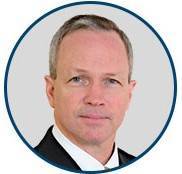Learn helpful techniques and best practices for capturing and working with crash scene evidence, such as skid and scuff marks.
Did you know there's a way to significantly reduce the working hours required for crash scenes while simultaneously improving the accuracy of data collection and measurements?
From planning and time spent on scene, to working with the data collected, 3D Laser Scanners can enhance the investigator's ability to capture evidence efficiently and effectively for use in post-accident reconstruction and analysis, documentation and more.
Discover how to clear roads 50% faster post-accident while still collecting more thorough data. Learn what calculations can be done later with the proper measurements.
Join us for our next webinar with public safety and forensic experts as we dive into best practices for scanning crash scenes and working with that captured data, along with real experiences and examples. The live event will feature tips and new valuable resources.
Watch this webinar to:
- Learn best practices for scanning crashes to capture everything without "over working" the scene
- See examples of how to work crash details, such as visibility of skid and scuff marks
- Learn what other valuable information can be obtained by analyzing skid marks
- Dive into what software can help you in post-capture analysis and recreation of the incident
- Gain access to valuable resources
Russell Boynton | Forensic Engineer
 Russell Boynton is a forensic engineer at FARO®. He is a 20-year veteran of law enforcement at the federal, state and local levels. Russ has 30+ years as a crash reconstructionist and is a recognized crash reconstruction expert in most New England states. In addition to his extensive career, Russ is also an experienced trainer for major crime and crash scene documentation for both the public and private sectors.
Russell Boynton is a forensic engineer at FARO®. He is a 20-year veteran of law enforcement at the federal, state and local levels. Russ has 30+ years as a crash reconstructionist and is a recognized crash reconstruction expert in most New England states. In addition to his extensive career, Russ is also an experienced trainer for major crime and crash scene documentation for both the public and private sectors.